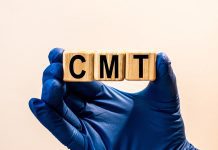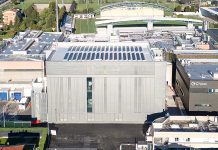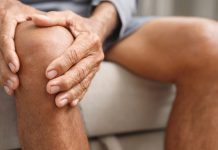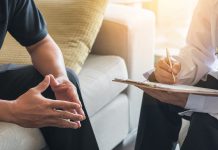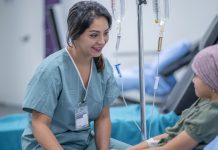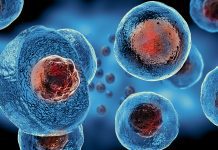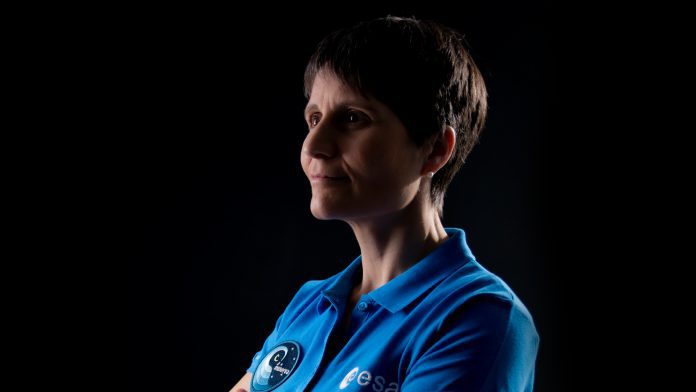
The International Osteoporosis Foundation has launched a campaign in partnership with the European Space Agency and ESA astronaut Samantha Cristoforetti to raise awareness of bone health and provide strategies to mitigate bone loss.
Did you know that there are parallels between the development of osteoporosis here on earth, and what happens to astronauts’ bones in space?
Bones are living structures that constantly reshape themselves in response to the stress that is put on them. On Earth, gravity applies a constant mechanical load to the skeleton, and this helps bones maintain their density so that they are able to support the body. Nevertheless, as they age, bone loss starts to occur more rapidly, and this is especially true for women following menopause. Likewise, astronauts who spend extended periods of time in space are also affected by rapid bone loss. In fact, they can lose more bone mass during one month in the microgravity of space than women do on Earth within one year after menopause.
One of the key ways to fight bone loss, whether in space or on earth, is through weight-bearing, or ‘loading’ exercises. This is not just important for postmenopausal women and older men; younger people’s bone health also benefits from regular exercise. Just as astronauts need to train in preparation for their space mission, younger people should be preparing for older age by strengthening their bones and muscles through regular workouts and by following a bone-healthy diet.
These key messages are at the heart of the International Osteoporosis Foundation’s (IOF) new #LiftOffForBoneHealth public awareness campaign, launched in cooperation with the European Space Agency (ESA) and celebrated ESA astronaut Samantha Cristoforetti. On 27 April 2022, Samantha returned to the International Space Station for her second mission, Mission Minerva. Before lifting off, she recorded impactful video messages to advocate for bone health and to encourage people all over the world to build and maintain strong bones for life.
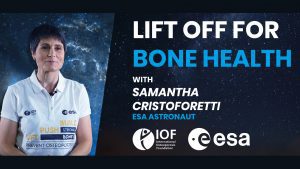
In the coming months, IOF and member national osteoporosis societies around the world will be sharing Samantha’s inspiring words across all major social media channels using the campaign hashtag #LiftOffForBoneHealth. The videos urge women to care for their bone health through weight-bearing exercise, following a nutritious diet, and being aware of their personal osteoporosis risk factors. The campaign will also remind people who have osteoporosis to ensure that an exercise programme is right for them and encourage them to consult a physical therapist or fitness expert who can help devise a tailored, safe, and highly effective exercise programme.
Samantha Cristoforetti stated: ‘As an astronaut, I know that a tailored exercise program before, during, and after my space mission will be critical to keeping me strong and fit. Without intensive load bearing and resistance exercises designed to counteract bone loss, an astronaut can lose one to two percent of bone density every month while in space. People on Earth face a similar risk as they age, and as a result, one out of three women and one out of five men over the age of 50 go on to experience a bone fracture due to osteoporosis.
‘That is why it is so important that we all make bone and muscle strength our personal mission, and why I hope to inspire people of all ages, and especially younger women, to stay fit through regular load-bearing exercises as part of a bone-healthy lifestyle.’
As highlighted in the campaign, not all exercises are equally beneficial for bone health. Overall, most adults should aim to exercise for 30 to 40 minutes at least three to four times each week, ensuring that weight-bearing (or ‘loading’) and resistance exercises are included in the programme. These are the most effective types of exercises to build bone strength, and they include activities such as jogging, stair-climbing, rope-skipping, dancing, or sports like tennis. As well, use of elastic resistance bands or doing bodyweight exercises, such as push-ups, pull-ups, and squats, and using weight machines at the gym, or free weights such as dumbbells – all of these types of exercises are great ways to build stronger muscles and bones. Together with a balanced, calcium- and protein-rich diet, avoidance of smoking and excessive alcohol intake, and early recognition of osteoporosis risk factors, anyone of any age can ‘lift-off for bone health’ and a fracture-free future.
Osteoporosis is often called a ‘silent disease’ because the disease itself is not painful or visible, and people with osteoporosis are not usually aware they are affected until a bone breaks after a minor fall. Such breaks, known as fragility fractures, can be devastating for the sufferer, causing pain, disability, and loss of physical independence. They are also costly and pose a burden not just to the patient, but to family and carers. The recently published IOF SCOPE 2021 report found that 4.3 million new fragility fractures occurred in 2019 in Europe (or eight fractures per minute!) at a cost of €56.7 billion to European healthcare systems. This underscores the need for public health campaigns to promote awareness of prevention and early diagnosis.
Professor Cyrus Cooper, president of IOF, noted: ‘Prevention is always better than cure – and we know that a bone-healthy lifestyle throughout life helps reduce the risk of developing osteoporosis and suffering life-changing fractures at an older age. I would like to thank the European Space Agency and ESA astronaut Samantha Cristoforetti for their participation in this global public health campaign which will serve to highlight the importance of weight-bearing and resistance exercise as a critical cornerstone of osteoporosis prevention.’
About the #LiftOffForBoneHealth campaign
The #LiftOffForBoneHealth campaign, to be broadcast via social media worldwide, is hosted on the IOF website at www.osteoporosis.foundation/esa-lift-off-for-bone-health/en
The campaign messages and videos are available in 10 languages, including the following European languages: English, French, German, Greek, Italian, and Portuguese.
You can read about the European Space Agency at www.esa.int and follow Samantha Cristoforetti’s Minerva mission at www.esa.int/minerva
About IOF
The International Osteoporosis Foundation (IOF) is the world’s largest nongovernmental organisation dedicated to the prevention, diagnosis and treatment of osteoporosis and related musculoskeletal diseases. IOF members, including committees of scientific researchers as well as more than 300 patient, medical and research organisations, work together to make fracture prevention and healthy mobility a worldwide heath care priority. IOF also leads the annual World Osteoporosis Day campaign, an awareness campaign marked on October 20 and hosted at www.worldosteoporosisday.org, and promotes secondary fracture prevention through its dedicated Capture the Fracture® programme at www.capturethefracture.org.
International Osteoporosis Foundation
www.osteoporosis.foundation
https://www.linkedin.com/company/international-osteoporosis-foundation
https://www.facebook.com/iofbonehealth
https://twitter.com/iofbonehealth
https://www.instagram.com/international_osteoporosis/
https://www.youtube.com/iofbonehealth
This article is from issue 22 of Health Europa Quarterly. Click here to get your free subscription today.


